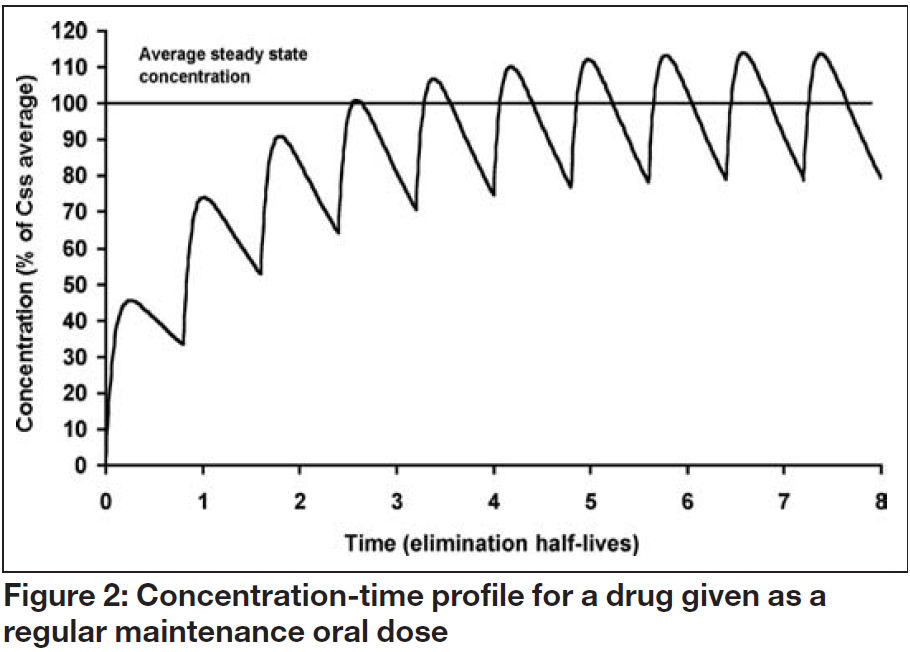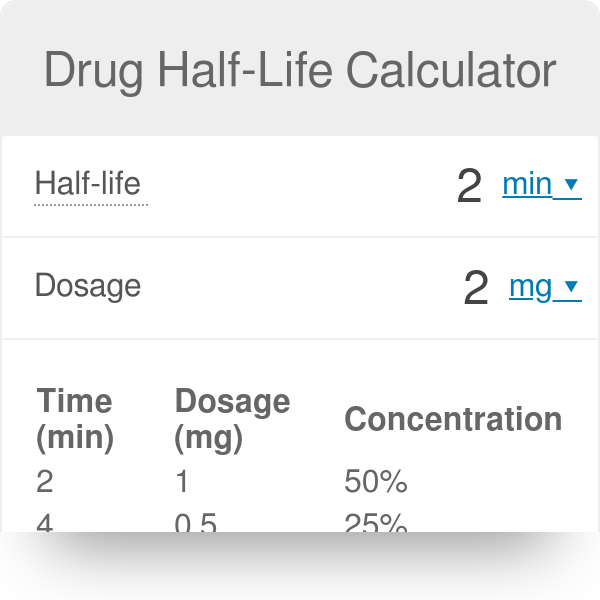half life formula pharmacology
After 2 half-lives 75 of the drug is gone. After 1 half-life 50 of the drug is gone.
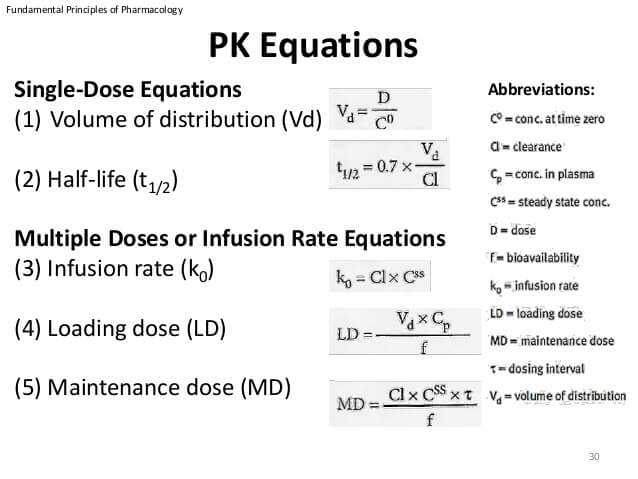
Pharmacokinetics Mnemonics Epomedicine
Half-life t½ is the time required to change the amount of a drug in the body by one-half during elimination.

. Formulas. For drugs with first order kinetics this is a constant. What is half life in pharmacokinetics.
T 12 Natural undefined logarithm undefined 2 k 0693 k. Formula Half Life 0693 KE Half Life 0693 0015 462 hours So this means that the drug will take 462 hours to remove roughly half. Inversely proportional to the fraction of the dose lost in each dosing interval.
Effective half-life in clinical pharmacology. A biological half-life or elimination half-life is the time it takes for a substance drug radioactive nuclide or other to lose. Affiliation 1 Wyeth.
Effective half-life in clinical pharmacology. The half-life of Ambien is about 2 hours. Biological half-life also known as elimination half-life pharmacologic half-life of a biological substance such as medication is the time it takes from its maximum concentration C max to half of its maximum concentration in the blood plasma and is denoted by the abbreviation.
The constant 07 in equation 6 is an approximation to the natural logarithm of 2. Next assume that we stop the infusion. Math Calculations in Pharmacology.
Half-life is useful because it indicates the time required to attain 50 of steady stateor to decay 50 from steady-state conditionsafter a change in the rate of drug administration. A pharmacological definition and an analysis to its formula. Half-life is the time required for the amount of something to fall to half its initial value.
An exponential decay can be described by any of the following four equivalent formulas. Half life formula half life equation Half life 0693k. This can be measured by testing for the.
The formula for half life is t 1 2 l n 2 λ 0693 λ. Most noteworthy this shows that the rate of popcorn eating was not at a steady pace and that the half-life of popcorn is of 15 minutes. The two main factors which affect drug half-life are volume of distribution and clearance.
Authors H Boxenbaum 1 M Battle. Half-life can be determined mathematically from the elimination rate constant k as. 109112 where N 0 is the initial.
By definition t 12 is the time required for the concentration to fall by one half. The rest of the popcorn continues until the rest of the movie. The formula for half-life is t½ 0693 Vd CL.
After one half-life the amount of drug remaining in the body is 50 after two half-lives 25 etc. After 4 half-lives the amount of drug 625 is considered to be negligible regarding its therapeutic effects. So if you take Ambien after 2 hours the plasma concentration will be reduced to.
The half-life of a drug depends on its clearance and volume of distribution. Demarcate this time point. Effective half-life in clinical pharmacology.
Figure 34-1 illustrates a graphical method for determination of half-life. What is Half Life. The elimination half-life is considered to be independent.
Effective half-life in clinical pharmacology J Clin Pharmacol. The formula for half-life is t½ 0693 Vd CL Volume of distribution Vd and clearance CL are required to calculate this variable. The half-life of a pharmaceutical refers to the amount of time it takes for the concentration of that substance in the body to be reduced by one half.
For a dosage of 46mg with a half life of 2 hours. Half-life allows the calculation of the time required for plasma concentrations to reach steady-state after starting or changing a dosing regimen. Subsequently one may also ask how do you calculate half life in pharmacology.
The mathematical representation of Half life is given below. For your convenience the medicine half life calculator provides a series of measurement units and the result will respect the unit selection. Half-life t 12 1.
Math Calculations in Pharmacology. Formulas for half-life in exponential decay. T - time that has passed since the first original administration of the drug.
After 4 5 half-lives we are essentially at steady state concentration. Learn the half life formula here. In biology and pharmacology.
The converse of half-life is doubling time. Half-life is used to estimate how long it takes for a drug to be removed from your body. After 4 5.
The formula for half life is. This is used to measure the removal of things such as metabolites drugs and signalling molecules. The 0693 factor is in fact the logarithm of 2 which represents the fact that drug clearance typically occurs at an.
Half-life is a first-order kinetic process because the same proportion 50 of the drug is removed during equal periods. Half-life refers to the amount of time it takes for half of a particular sample to react. Half-life t½ is the time required to reduce the concentration of a drug by half.
The half-life of a drug is the time taken for the plasma concentration of a drug to reduce to half its original value. Half-Life in Pharmacology Quiz. There are only two things you need to input the dosage and half life.
Loading Dose Pharmacology Flashcards Draw It To Know It

Elimination Rate Constant An Overview Sciencedirect Topics

Drug Half Life Explained Calculator Variables Examples
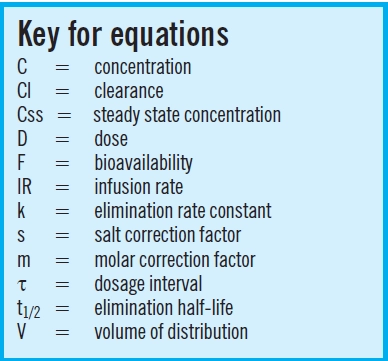
Back To Basics Pharmacokinetics The Pharmaceutical Journal
Med Print 3 Pharmacokinetic Models
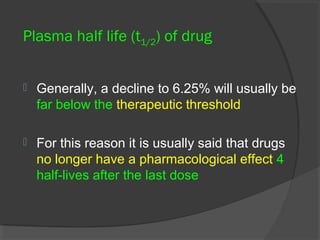
Clinical Pharmacokinetics I Half Life Order Of Kinetics Steady Sta

First Order Elimination Rate Constant And Half Life A Closer Look Lect 11 Youtube
Half Life Pharmacology Flashcards Draw It To Know It

Drug Half Life An Overview Pharm Lect 10 Youtube

Pharmacokinetics Vd Clearance Half Life Calculation Drug Distribution Elimination Rate Youtube


